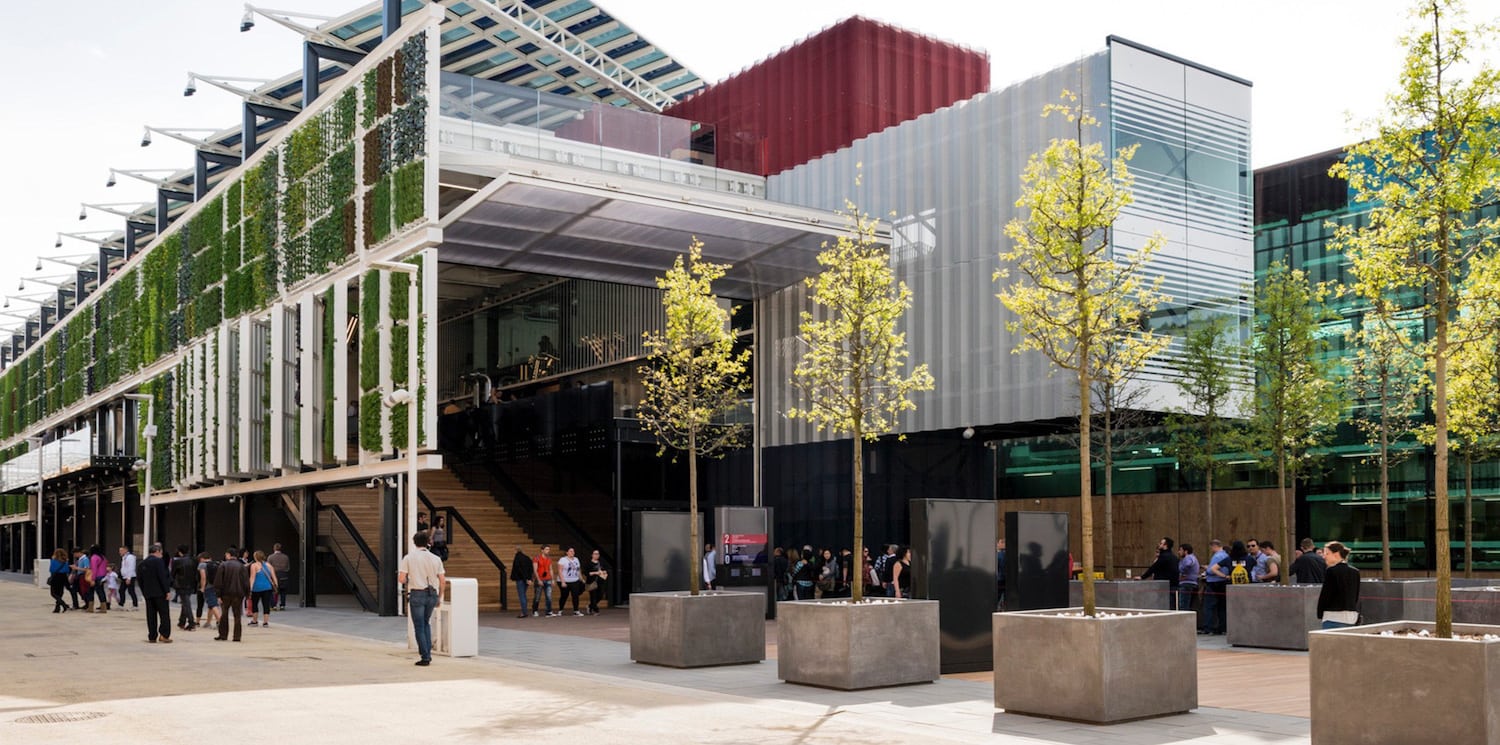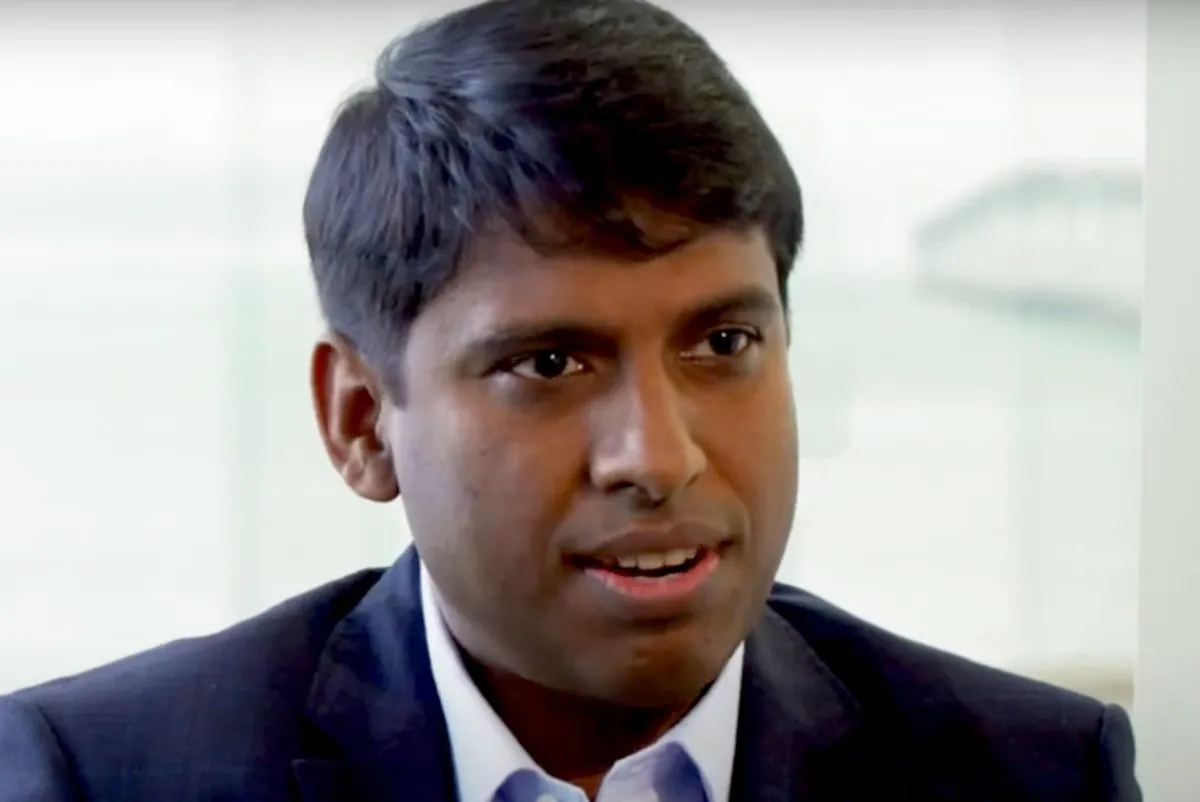Why Hamburg is Europe's Most Innovative City for Meetings and Events

Skift Take
This sponsored content was created in collaboration with a Skift partner.
Hamburg is emerging as a perfect storm of innovation in the meetings and events industry, due to a conscious collision of smart urban infrastructure, advanced industry clusters, and sophisticated communications strategy.
Arguably no other city in Europe is positioning itself around such a cohesive destination brand story, leveraging the future of tech and social innovation, urban livability, and sustainable mobility.
This year, Hamburg is a finalist in the running for the 2018 European Capital of Innovation Award, which will be announced at Web Summit in Lisbon this November.
The criteria for a city being nominated includes: 1) Experimenting with innovative concepts, processes, tools, and governance models as a test-bed for innovation; 2) Engaging citizens in the innovation process and ensuring the uptake of their ideas; 3) Expanding the city's attractiveness to become a role model for other cities; and 4) Empowering citizens by bringing concrete and measurable added value through the implementation of innovative practices.
“Cities both in Europe and all over the world are everywhere facing similar challenges," said Rolf Strittmatter, CEO of Hamburg Marketing, which overseas tourism, business events, and economic development promotion for the City of Hamburg. "The European Capital of Innovation Award aims to stimulate exchange between European cities regarding innovative solutions, and it makes a contribution to securing and increasing our city’s economic performance and competitiveness in a sustainable way, and so also residents’ quality of life. This is the real benefit for Hamburg.”
According to Florian Gerdes, marketing manager, USA for the Hamburg Convention Bureau, all of the investment in the local innovation economy is paying off in terms of driving meetings business, and elevating Hamburg beyond the shadow of Germany's more well-known event industry magnets.
During the last year, the Bureau has been co-opting Hamburg Marketing's new Future.Hamburg website content into its messaging. It profiles the cutting-edge advancements in smart city mobility, connectivity, transport, and technology, ranging from the Airbus A380 factory to the world's first electric-powered bicycle trailer.
“Especially in North America, a lot more meeting planners are showing much greater interest in Hamburg because they see us as a very modern city at the forefront of innovation,” said Gerdes. “We’ve also established ourselves as a place where event attendees can easily access the people leading innovation in our priority clusters, including: media and IT, aviation, life sciences, logistics and mobility, creative industries, healthcare, renewable energies, and maritime industries.”
The Conference and Convention Market Survey, commissioned by the Bureau, shows the number of overnight stays attributable to meetings and other business events increased from 2.3 million in 2013 to 3 million in 2016.
In recent years, the public and private sectors in Hamburg have increasingly promoted the destination as a “City of Solutions” and a “City of Content.” Those are basically two sides of the same coin, emphasizing the need for innovative ideas and the need to share those ideas to scale and commercialize them.
That, basically, also sums up the purpose of the meetings and events industry today as a global innovation distribution channel.
Hamburg, then, is providing a platform for that distribution by evolving as an interdisciplinary knowledge sharing machine, connecting infrastructure, industry, and messaging. Here’s how the city is approaching those three themes with a holistic vision for merging the local innovation economy and global visitor economy.
[vimeo 245204842 w=640 h=360]
The Rise of HafenCity
From an urban infrastructure standpoint, the HafenCity district on the Elbe River is presently the largest urban redevelopment project in Europe, built along the city’s original harbor and shipping docks. As outlined in the project’s masterplan drafted in 1999, HafenCity (Harbor City) is bringing together the world’s most innovative architects, urban planners, and technology companies to create a new paradigm in city living.
Adding 40 percent more landmass to Hamburg’s waterfront, HafenCity should be fully completed before 2030. The area is already achieving a lot of global buzz with new landmark buildings like the Elbphilharmonie concert hall. It was designed by the leading Swiss architecture firm, Herzog and de Meuron, who attempted to do for Hamburg with the instantly iconic Elbphilharmonie what the Sydney Opera House did for Australia’s capital.
HafenCity, by nature of its scale, location, timing, and aspirations, is helping transform Hamburg into a new global capital of innovation based on the strategies behind its development.
“We’re trying to create a new downtown for the 21st century, merging sustainable structures and resilient technology systems with a very diverse collection of public spaces for bringing together all types of people,” said Professor Jürgen Bruns-Berentelg, chief executive of HafenCity Hamburg. “Those public spaces are very important. When you have an ambitious project like HafenCity, you need to ensure that visitors and residents have the physical opportunity to meet each other, and have interesting discussions about what’s important to them, in as many different environments as possible.”
Professor Bruns-Berentelg says the priority from the start was to avoid what academics call “new-build gentrification,” where everything is homogenous and caters to a narrow audience. To keep a series of newly built neighborhoods interesting for both locals and visitors of all ages, now and in the future, he said there should be a “strategic integration of diversity by purpose,” so everyone can discover new people, activities, and spaces specific to their interests year after year.
For example, 30 percent of the housing stock in HafenCity is classified as affordable, cooperative, and/or communal. That’s designed to attract a wide mix of residents, which in turn, attracts a wide body of visitors. The city is also extensively walkable and bikeable. The new subway system is ranked among the world’s best, and the first autonomous shuttles in Hamburg are launching this year.
That makes it easy for locals, leisure travelers, and conference attendees to explore and experience what the city of the future will look and feel like. In fact, one of the first things you notice about HafenCity is the dearth of vehicles on the road. It’s just too easy, and fun, to get around via alternative forms of transportation.
It only takes minutes by bike, for example, to go from the public exhibits at the Greenpeace Germany headquarters to the floating Hamburg Maritime Museum, both of which are surrounded by modern apartment buildings and corporate offices powered by renewable energy.
Furthermore, the City of Hamburg and HafenCity have created an experiential mix of facilities and wayfinding to communicate to locals and visitors exactly what’s happening around them. The HafenCity InfoCenter KesselHaus, Osaka 9 HafenCity Sustainability Pavilion, HafenCity ViewPoint, MLOVE Future City Campus, and the Überseequartier Information Pavilion all provide context on the development of HafenCity and urban innovation in general.
“We at the Hamburg Convention Bureau always try to take meeting planners and journalists to those places when they’re in town, as HafenCity now plays such a vital role in our city,” said Gerdes.
There are also many different types of educational messaging and pop-up exhibits during special events and festivals to educate people on their journey throughout the district. Likewise, numerous companies offer private group tours in English for visiting conference attendees and organizations.
[vimeo 280336293 w=640 h=360]
A Platform for Advanced Industry
The modern urban user experience in HafenCity is helping provide a foundation for next-generation companies and local residents to embrace innovation across all of Hamburg.
It’s not that the city hasn’t always been a leader in certain industries, because it has, especially in logistics and mobility, IT and digital media. That’s due in large part to the city’s legacy in international shipping and trade through the Port of Hamburg, and its history as a basecamp for many of Germany’s primary media and marketing conglomerates.
But now, there’s a new pride. HafenCity and the Elbphilharmonie are giving Hamburg and its citizens a new 21st century identity — on a global stage — as a place where cool stuff gets built.
“From a cultural perspective, when you talk to local residents and politicians in Hamburg, you can definitely hear in their voices how there’s an openness to try new things and make them successful,” said Michael Fischer, head of public affairs for MOIA. Owned by Volkswagen, and based in Hamburg, MOIA is launching what it calls the world’s first smart ride-pooling service aboard VW vans to help lessen the need for single occupancy vehicles.
According to Fischer, the transportation company is unique in that it encompasses the entire ride-sharing value chain, consisting of the vehicles, app, and algorithms to provide a consistent customer experience.
“This is not just about a new product or service,” explained Fischer. “Many cities say they want to strengthen their mix of transportation modes, but Hamburg wants to be a global lighthouse for modern mobility to alleviate three big problems: emissions, noise, and lack of space.”
The Hamburg Convention Bureau is actively leveraging that collective community ambition to be a lighthouse for innovation.
Part of that process includes attracting conferences in advanced industries to Hamburg to build a knowledge pipeline connecting the world’s most forward-thinking organizations with local companies. The Hamburg Convention Bureau is accomplishing that by showing the innovation reshaping the city that’s specific to a potential conference’s industry cluster.
For example, Hamburg is home to the world’s most powerful laser, which helped the city attract the Ultrafast Phenomena 2018 conference and 500 scientists working in laser technology.
“We also won the bid to host the Intelligent Transit Systems (ITS) conference in 2021 because we’re known as a city of solutions in smart cities, mobility as a service, and intelligent buildings,” said Gerdes. “We were chosen as well because HafenCity will eventually only be accessible by emission-free vehicles.”
The marketing of local innovation continues after a conference bid is won, as well.
The ITS2021.Hamburg website, for instance, has a video called “COS It’s Hamburg — City of Solutions,” embedded in all of the information around the upcoming ITS 2021 conference. It stars a local 13-year-old girl who promotes the city’s expertise in logistics and mobility, as well as the new Congress Center Hamburg, while riding her bike through the streets.
That’s where the City of Hamburg and the Hamburg Marketing organization excel. They create a ton of excellent content to inform the average local and visitor about what urban innovation looks like, why it benefits how people live and work together, and where it aligns with the city’s rise on the world stage.
“The projects being implemented in preparation for this congress, such as the MOIA transportation system, are really innovative and quite impressive,” said Gerdes. “Both the general public and the more than 10,000 attendees at this congress will be able to experience those projects up close.”
[vimeo 234984490 w=640 h=360]
Hamburg: City of Content
Some of Germany’s most influential media and publishing companies are based in Hamburg, including Der Spiegel, Stern, Die Zeit, and BILD. The City of Hamburg has been busy as its own media company in recent years, producing a wealth of unique programming and print materials that position Hamburg as a global innovation capital.
That includes the new Future.Hamburg website, and the “Hamburg: City of Content,” “Hamburg Innovation Parks,” and “Free Port of Innovative Ideas” reports.
The Future.Hamburg portal is a model for every city to consider emulating with content such as the Refugee First Response Center. It’s a powerful story about how local Hamburg organizations developed care facilities inside shipping containers, with local doctors and remote translation services to assist new refugees arriving in Hamburg.
In the “Hamburg: City of Content” report, there’s editorial about the Online Marketing Rockstars conference, which is returning again to Hamburg in 2019.
"Online Marketing Rockstars is an open platform for numerous movers and shakers in the scene, artists, experts, and the key firms in the sector to come together," said Philipp Westermeyer, founder and managing director of Online Marketing Rockstars.
The Hamburg Convention Bureau produced content summarizing the 2017 Online Marketing Rockstars event, attended by 27,000 delegates. It includes a Q&A featuring Ove Niemann, the organizer of OMR, and Veronika Reichboth, project manager for nextMedia.Hamburg.
Niemann said: “Hamburg is a marketing and media city. Most of the leading companies are here: agencies, advertisers, and platform leaders such as Google and Facebook. The exhibition halls are right in the middle of the city directly next to bars and restaurants. The whole festival integrates perfectly into the city. Many people from different corners of Hamburg actively support OMR from companies to artists to city organizations.”
Reichboth added: “Hamburg has a really rich media and digital industry — the strongest in Germany actually. Besides long-established publishing houses such as Gruner+Jahr, Axel Springer, Spiegel, Die Zeit and dpa, Hamburg is also a major hub in the digital media space. In addition to Google and Facebook, Twitter and Yelp are also some of the global enterprises that call Hamburg home. Many highly successful startups such as Xing, Jimdo, myTaxi, and Stuffle also live in Hamburg.”
That’s a perfect example of an event producer connecting with a local industry ambassador to leverage a city’s expertise in advanced industries and local amenities to produce a conference in one its priority sectors. It’s also an example of how a city and convention bureau are sharing takeaways from that collaboration with related industries — in this case, digital media and marketing — and the people who plan their conferences.
Moving forward, the Hamburg Convention Bureau will continue to leverage local industry expertise and new experiences to inspire meeting planners.
For example, the 550,000 square-foot Hammerbrooklyn.DigitalCampus is another example where the general public and event attendees will soon be able to explore advances in urban and digital innovation. Scheduled to open in Q1 2019 between HafenCity and Hamburg’s central train station, the new $175 million facility is partially housed inside the American pavilion shipped over from Milan Expo 2015.
According to the City of Hamburg, the programming will “focus on smart cities and smart mobility, virtual and augmented reality, 3D printing, and the impact of blockchain technology. A digital academy with teaching and event rooms, a maker space, and lounges and catering facilities will create an environment for creative and disruptive thinking.”
This is basically a turn-key creative venue for meeting planners with any attendees interested in exploring the future.
"The guiding idea at Hammerbrooklyn is to develop, try out, and learn something new," Mathias Müller-Using, co-founder of Hammerbrooklyn, told a local media group. "This is where the city of the future is to be conceived.”
The above content was produced by the SkiftX brand content team for our Skift Cities platform, defining how cities are connecting their visitor and innovation economies.




